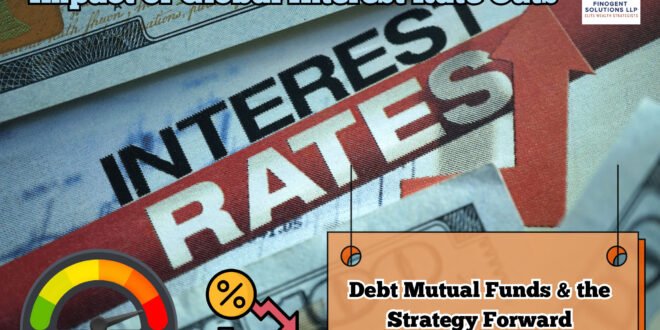The recent global shift toward lowering interest rates, notably by the US Federal Reserve, has rippled through the debt markets. We explore how these changes influence debt mutual fund holders and what strategic moves can be considered to optimize investments in the current economic climate.
Understanding the Global Rate Cuts
The US Federal Reserve’s decision to initiate a rate cut of 50 basis points, with a projected additional reduction totaling 150 basis points by next year, marks a significant pivot in monetary policy aimed at managing inflation and fostering economic stability. These adjustments are anticipated to bring down the federal funds rate to a target of 2.75% to 3% by January 2026.
Implications for Debt Mutual Fund Holders
- Fed’s Soft Landing Achievement: The Fed’s successful moderation of inflation from 5% in 2022 to a forecasted 2.25% next year underscores a strategic soft landing. This scenario presents a conducive environment for debt instruments as lower inflation typically sustains bond prices.
- Rate Cut Transmission Effects: The reduction in interest rates is expected to compress yields, particularly in the short to medium term. For debt mutual fund investors, this could mean enhanced bond prices in the near future but necessitates vigilance as the yield curve adjusts.
Strategic Recommendations for Debt Mutual Fund Investors
- Duration Strategy Adjustment: With the Fed’s rate cuts and the likelihood of RBI following suit, albeit more conservatively, investors should consider adjusting the duration of their debt portfolios. Increased duration may benefit from falling yield scenarios, enhancing capital gains from long-term securities.
- Dynamic Fund Allocation: Considering the RBI’s cautious stance, a mix of medium to long-duration funds could be more suitable. These funds offer a balance between yield and exposure to interest rate movements.
- Yield Curve Considerations: As rate cuts proceed and monetary policy adjusts, the yield curve is expected to steepen. Investors should monitor this trend to position their portfolios towards segments of the market that might benefit from these shifts, such as longer-term government securities or high-quality corporate bonds.
Case Study: Yield Movement and Fund Strategy
- Pre-Cut Scenario: Prior to the rate cuts, short-term debt instruments were less attractive due to higher borrowing costs. Investors favored safer, long-duration assets.
- Post-Cut Forecast: With the rate cut, there’s an expectation for short-term rates to decrease, making short to medium-term debt instruments more appealing. This shift suggests that funds focusing on medium-duration bonds could see improved performance as yields adjust.
Conclusion
The global trend of decreasing interest rates provides both opportunities and challenges for debt mutual fund investors. By strategically adjusting fund allocations and preparing for shifts in the yield curve, investors can potentially enhance their returns and mitigate risks associated with rate changes. Monitoring economic indicators and central bank policies will be crucial in navigating this evolving landscape.
Disclaimer: This analysis is for informational purposes only and does not constitute investment advice. Investors are encouraged to consult with financial advisors and conduct thorough due diligence before making any investment decisions. Mutual fund investments are subject to market risks, and past performance is not indicative of future results.
 Bond Trading
Bond Trading Finogent Solutions LLP Top Wealth Manager in India
Finogent Solutions LLP Top Wealth Manager in India


